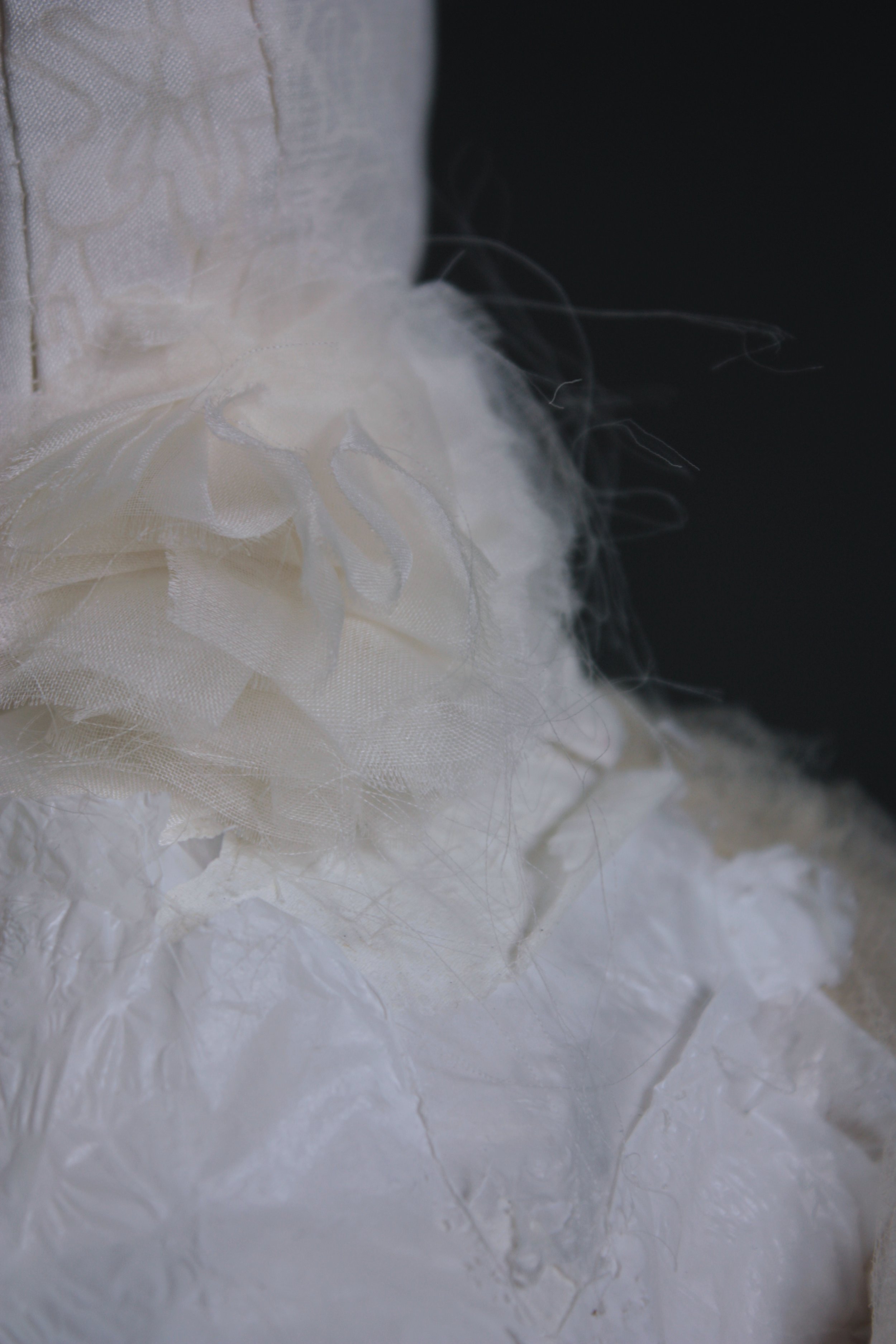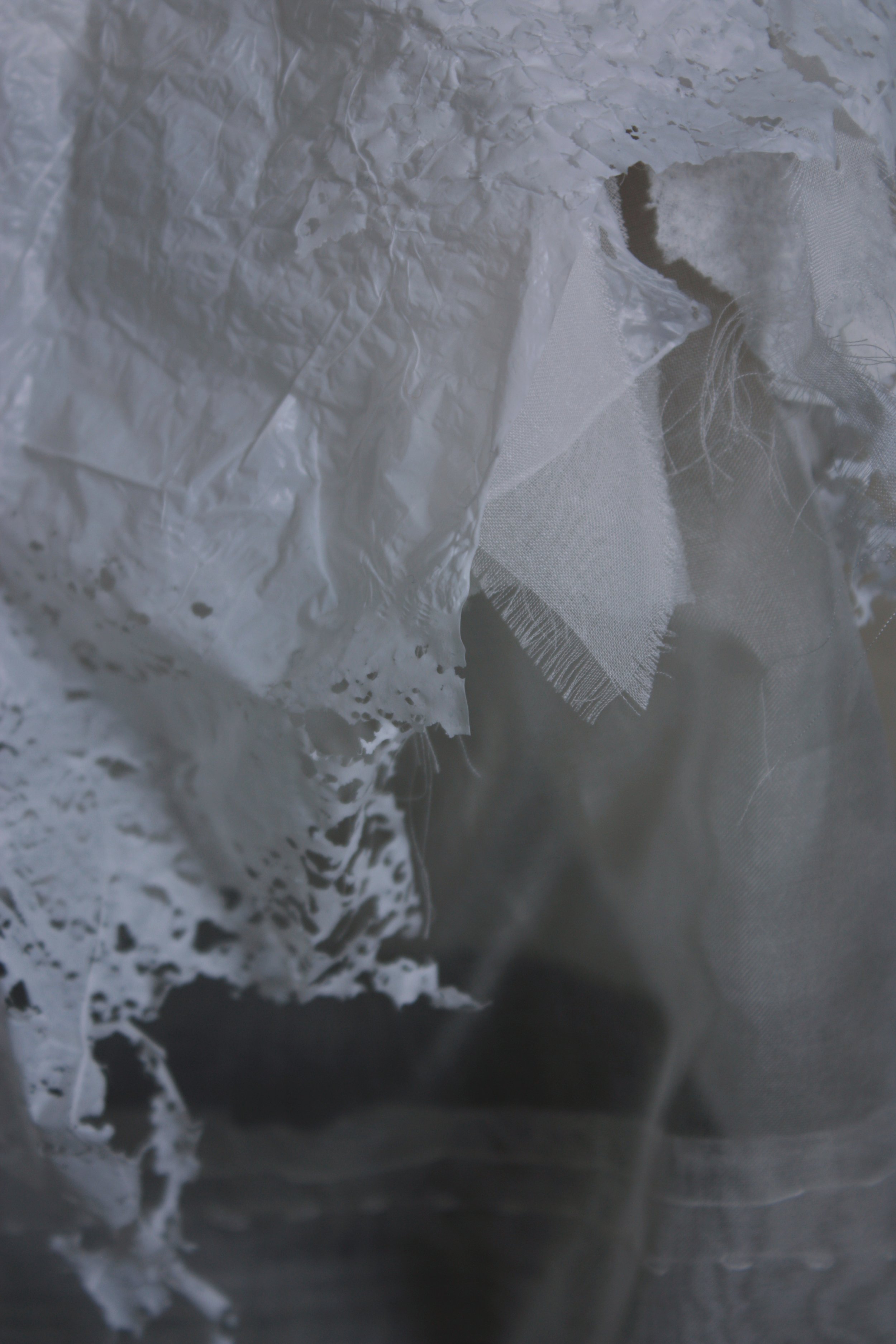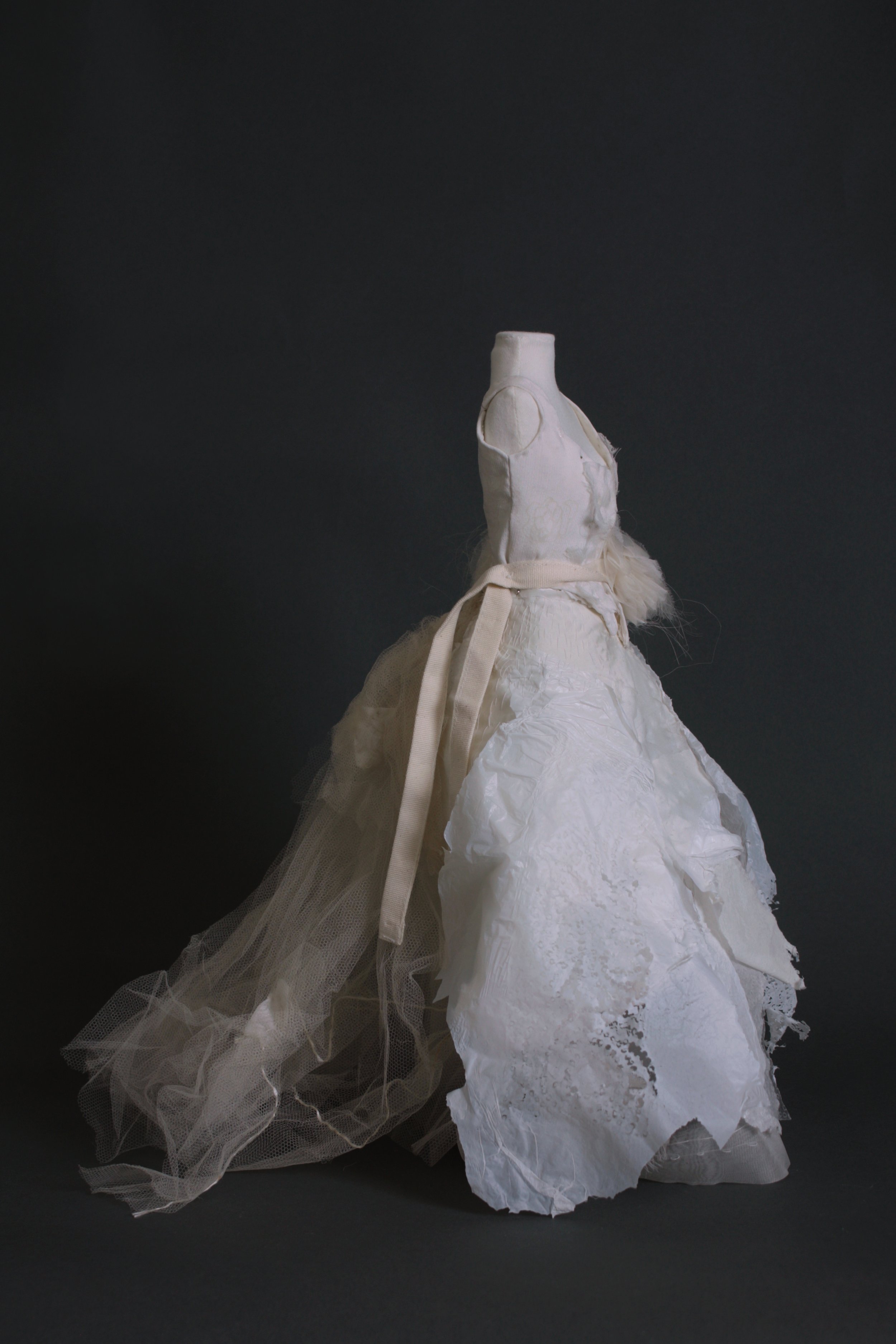
Entangled moments in time
Entangled Moments in time
By Chloe Scrivener
The ghostly remains of a piece of a wedding bodice originally worn c.1765 by Mary Davies, with a hand-stitched and written note attached, inspired this dress. It is a call to action to reduce the amount of plastic consumed and discarded, alongside the positive message of reclaiming and reusing pre-existing materials and threads.
“A call for action to change (…) to transform our world for the better by 2030.” These are the words of the 2030 UN Agenda for Sustainable Development. I feel passionate about saving the planet and have done what I can to ‘do my bit’ to protect it for future generations. This held more importance after I had my son and I continued to use eco-friendly products, sourced ethically made clothing and reduced waste. I wanted to use reclaimed materials and some plastic packaging in my design.
The UN Agenda; ‘We are determined to protect the planet from degradation (…) so that it can support the needs of the present and future generations.’ This resonates with my thinking and how I would like to progress designing and making in the 21st century.
The wedding dress bodice I chose had a handwritten note from a relative of Mary Davies, to whom the piece belonged. This gave some idea of provenance, but further research on Mary Davies drew a blank. From the outset my idea was that the garment should be white, and that it should have a ghostly, ethereal feel to it, reinforced and echoing the ghost of Mary Davies. The piece has evolved organically, allowing the materials to dictate how the piece has been constructed. I later referred to a 1765 polonaise from Arnolds, J (1972) Patterns of Fashion, as I realised that the dress required a base structure and should reference the dress at the time. I wanted the bodice to have a strong structure in contrast to the rest of the dress. The piece has been constructed only using hand stitching techniques some of which are deliberately visible.
This piece is a call to action to reduce the amount of plastic consumed and discarded, and a positive message of reclaiming and reusing pre-existing materials and threads.







